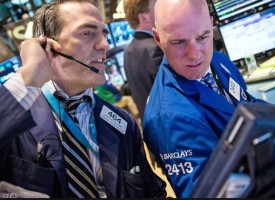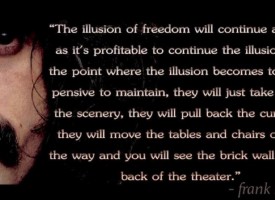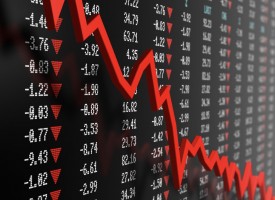With global stock markets mixed, today a legend in the business sent King World News a powerful piece about why the central planners are trapped.
October 21 (King World News) – From Art Cashin’s note: “An Empty Toolbox – In their latest Hoisington Quarterly Review, Van Hoisington and Lacy Hunt present a rather sobering view of the Fed’s current quandary and a struggling economic recovery. Given their very accurate calls on bonds and interest rates, their views must be taken very seriously. Here are a few snippets:
Future business activity will reflect two economic realities: 1) the over-indebted state of the U.S. economy and the world; and 2) the inability of the Federal Reserve to initiate policies to promote growth in this environment.
…..
U.S. government debt now stands at 103% of GDP. If private debt is included, the ratio climbs to about 370% of GDP. Scholarly studies indicate that real per capita GDP growth should slow by about one-quarter to one-third from the long-run trend when the total debt-to-GDP ratio rises into the range between 250% and 275%. Since surpassing this level in the late 1990s, real per capita GDP has grown just 1% per annum, much less than the 1.9% pace from 1790 to 1999.
…..
The second economic reality is the failure of the Federal Reserve to produce economic progress despite years of wide-ranging efforts. The Fed’s zero interest rate policy (ZIRP) and quantitative easing (QE) have been ineffectual, if not a net negative, for the economy’s growth path.
Short-term interest rates in the U.S. have fallen to near zero, restraining the central bank’s ability to lower them further. None of the more powerful channels of monetary policy, including money growth, have been responsive to Fed actions. When the debt overhang is excessive, the Fed and other central banks cannot control money and velocity, real long-term interest rates or the Wicksell Effect. Over the summer, the Wicksell effect has become more adversarial to economic growth in the U.S. as nominal GDP growth has slowed, while the market rate of interest, as measured by the BAA corporate bond yield, has risen. Treasury bond yields, in real terms, have remained stubbornly unchanged since 1990 even though the nominal bond yield has dropped 600 basis points.
Despite the unprecedented increase in the Federal Reserve’s balance sheet, growth in M2 over the first nine months of this year fell below its average rate of growth over the past 115 years, a time when the growth in the monetary base was stable and quite modest. In addition, velocity of money, which is an equal partner to money in determining nominal GDP, has moved even further outside the Fed’s control. The drop in velocity to a six decade low is consistent with a misallocation of capital and an increase in debt used for either unproductive or counterproductive purposes.
They then go on to discuss the very limited options that the Fed has and why none of them may be effective. Go to their website and pull up the whole thing. It’s essential reading.
Consensus – U.S. futures are higher based on an improved round of earnings reports and some strength in European markets. Crude is lower and could weigh on stocks, if it deepens after the inventory data at 10:30. Stick with the drill – stay wary, alert and very, very nimble.” ***ALSO JUST RELEASED: Gold $1.5 Quadrillion Derivatives Bomb And The Great Financial Disaster CLICK HERE.
© 2015 by King World News®. All Rights Reserved. This material may not be published, broadcast, rewritten, or redistributed. However, linking directly to the articles is permitted and encouraged.







